Unraveling the mystery of yarn labels, this article offers clear steps to accurately interpret the vital information they contain.
Understanding yarn labels is essential for every knitting or crocheting project. These labels provide crucial information such as yarn weight, fiber content, yardage, care instructions, and more.
Reading yarn labels correctly ensures you’ll choose the right yarn for your project, leading to better results. This article will delve into each part of the yarn label, providing a comprehensive guide on how to read them, ensuring you have all the necessary knowledge for your next yarn crafting venture.
Key takeaways:
- Yarn labels include brand name, yarn name, and benefits.
- Yarn weight categories indicate thickness and project suitability.
- Yarn labels provide the weight and yardage of the yarn.
- Gauge information helps achieve the desired size and tension.
- Fiber content determines how the yarn behaves and should be cared for.
Brand Name and Yarn Name
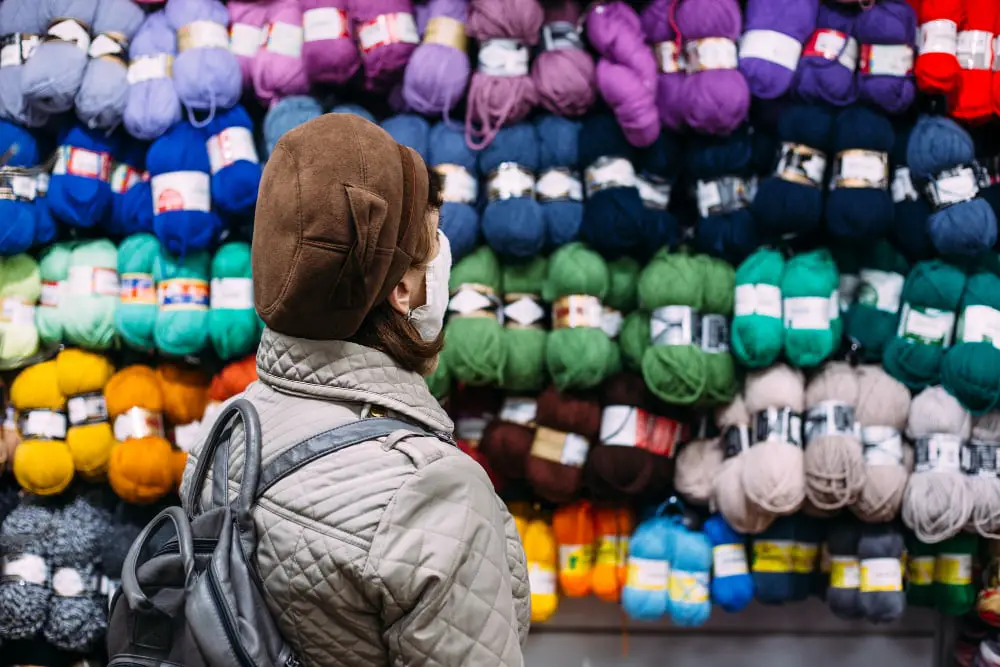
The Brand Name is usually displayed prominently on the label, positioning it as a marker of quality and style. Brands can range from well-known household names to smaller, independent dyers.
The Yarn Name is also important, often creatively chosen to reflect the texture, color, or origin of the yarn. For instance, a yarn with speckled colors might have a name like ‘Starry Night,’ while a yarn made of alpaca fibers might be simply named ‘Alpaca.’
Knowing brand and yarn name is crucial for several reasons:
- Repeat Purchase: If you like the texture and quality of the yarn, you can easily purchase more of the same kind.
- Replacement: If you run out mid-project, the brand and yarn name can make it easier for you to find an exact match.
- Instructions: Patterns often specify a particular brand and name so you can achieve the desired outcome.
- Online Sharing: If you’re posting your creations online, others might want to know exactly what you’ve used.
Remember to keep this information handy for any future needs or queries. Keeping yarn wrappers or taking note of this information can be a helpful way to maintain a record.
Weight Category of Yarn
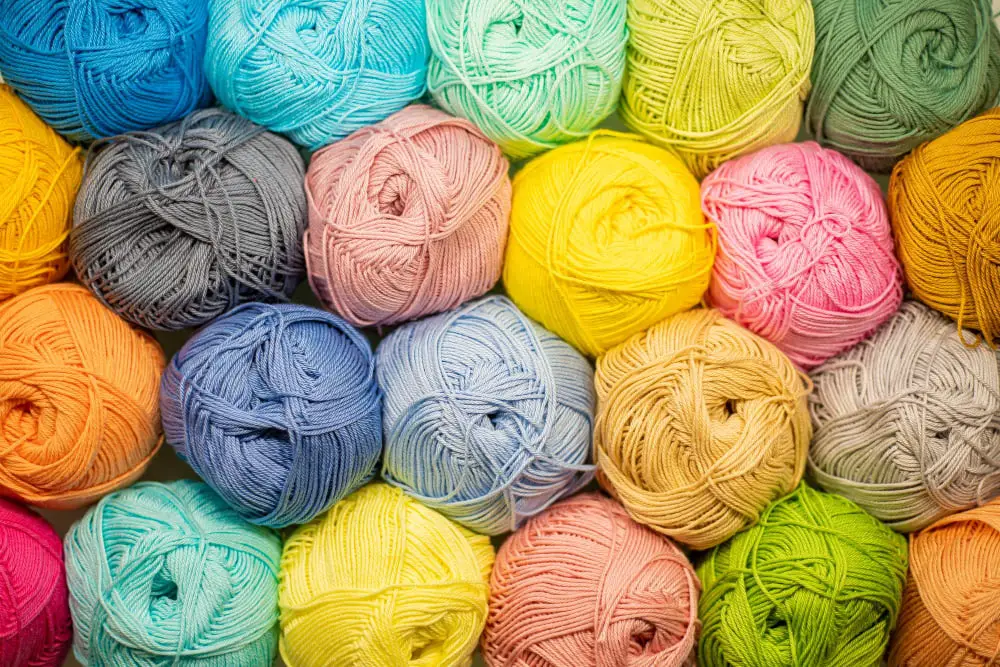
The weight category of yarn is an important piece of information that guides you in selecting the appropriate yarn for your project. Essentially, it indicates the thickness of the yarn.
- Lace and cobweb: Suited for delicate, fine work such as doilies and shawls.
- Superfine or sock: Ideal for lightweight projects including baby items and socks.
- Light or DK: Versatile and often preferred for garments and lightweight blankets.
- Medium or worsted: An all-rounder, used for a variety of projects like scarves, hats, blankets and sweaters.
- Bulky: Known for creating warm, heavy blankets, scarves or outerwear.
- Super bulky: The best pick for quick projects. Great for arm knitting or jumbo projects.
Each category gives an indication of the recommended needle size and the likely gauge to achieve using a specific yarn. It’s essential to read this information carefully, in order to match the yarn to the knitting or crocheting project, ensuring desired results. Experiment with different weight categories to understand what best suits your crafting needs.
Physical Weight of Yarn
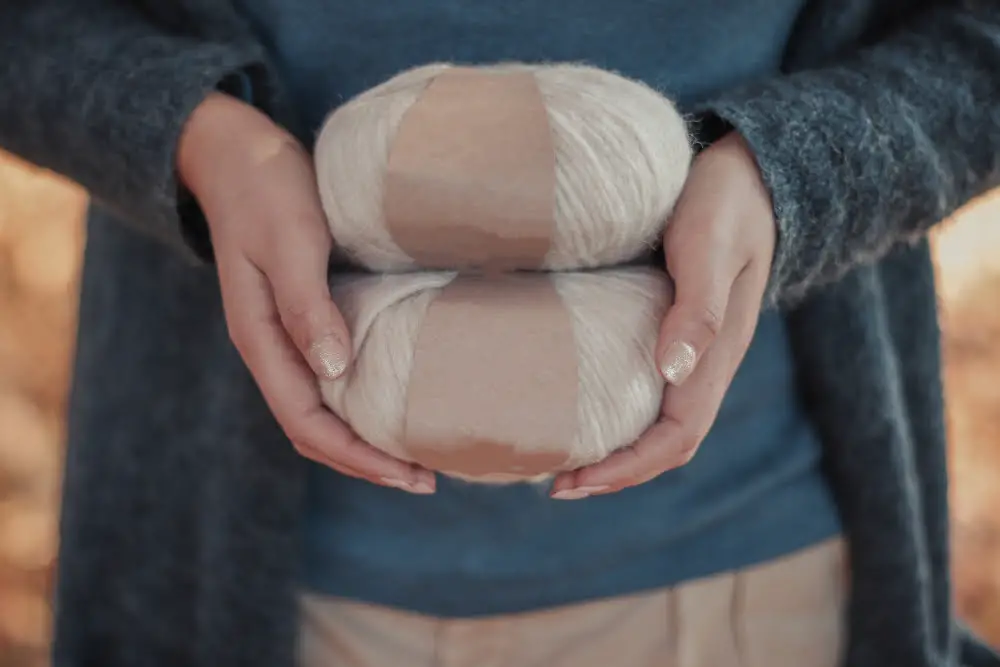
The physical weight of the yarn signifies how much the entire skein or ball of yarn weighs. This is typically denoted in ounces or grams and found near the brand or style name. It’s important to note that this isn’t related to the thickness or yarn weight category.
For instance, you might find a skein listed at 100 grams. This doesn’t refer to length or thickness, but the overall weight of that specific ball of yarn.
Make sure to take this into account when purchasing yarn for a project. If your pattern mentions you need 200 grams of a particular yarn, you’d need to buy two 100-gram skeins to have sufficient yarn for completion.
While most patterns will specify the required yardage instead of the physical weight, some do use weight. Therefore, understanding and noting it can help ensure you buy the right amount of yarn.
When tackling larger projects that may need several skeins, it’s often safer to overshoot your guesstimate rather than risk falling short and not being able to match the dye lot later on.
Bear in mind, the physical weight does not reflect the volume of yarn. A 50-gram skein of heavier cotton yarn might look significantly smaller than a 50-gram skein of lofty alpaca yarn.
Yardage On Yarn Labels

Yarn labels typically display the yardage, or the length of the yarn, specified either in yards or meters. This information is valuable when purchasing yarn for a specific project. It gives you an estimate of how much you can crochet or knit with one ball or skein of yarn.
To make use of this information, bear in mind the following:
- Observe the yardage listed on the label. It can range from less than fifty yards for a chunky craft yarn to over a thousand yards for a fine crochet thread.
- Compare the yardage and the weight of the yarn. This comparison will indicate the general thickness or denseness of the yarn. For instance, 100 yards of a thick, chunky yarn will weigh more than 100 yards of a thin, lightweight yarn.
- Calculate the total yardage needed for your project using the pattern’s requirements. If a pattern says you need 500 yards of yarn, and your ball of yarn is 250 yards, you would need to purchase two balls to ensure you have enough.
- Consider the yardage when substituting yarns. If the yarn recommended in the pattern is not available, the yardage can help you find an appropriate substitute.
Remember, knowing the yardage of your chosen yarn can prevent running out of yarn mid-project, so ensure to check this information each time you purchase a new yarn.
Gauge Information On Yarn Labels
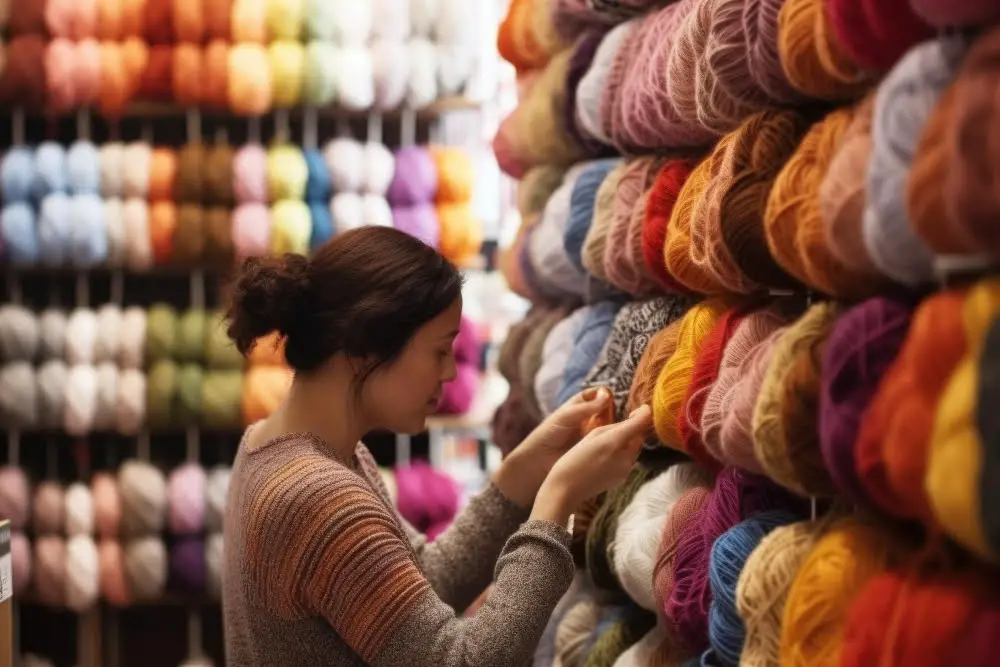
Gauge information showcases the number of stitches and rows that make up a 4-inch square (10cm) square when using a specific size of knitting needles or crochet hooks. This information helps to assess whether the yarn is suitable for a particular project. The key is to match the project requirements and gauge of the yarn.
Here’s how to interpret this information:
- Identify the needle or hook size recommended on the yarn label, denoted in millimeters for hooks and both US and UK sizes for needles.
- Locate the illustrated knitting needles or crochet hook, next to it you’ll see ‘x‘ sts and ‘x‘ rows, indicating the number of stitches and rows for a 4-inch square.
- Practice a sample swatch in the specified gauge to ensure accuracy before starting the project. If your stitches per inch are less, switch to smaller needles, and if your stitches per inch are more, use larger needles.
- Remember, some patterns might require a specific gauge not matching with the yarn label, always follow the pattern’s gauge for best results.
- Understand that the gauge isn’t an exact science as individual tension varies. Some people knit or crochet looser or tighter than others, which affects the final output.
Understanding and utilizing gauge information can help ensure the success of your yarn projects and leads to better fitting finished items.
Fiber Content of Yarn
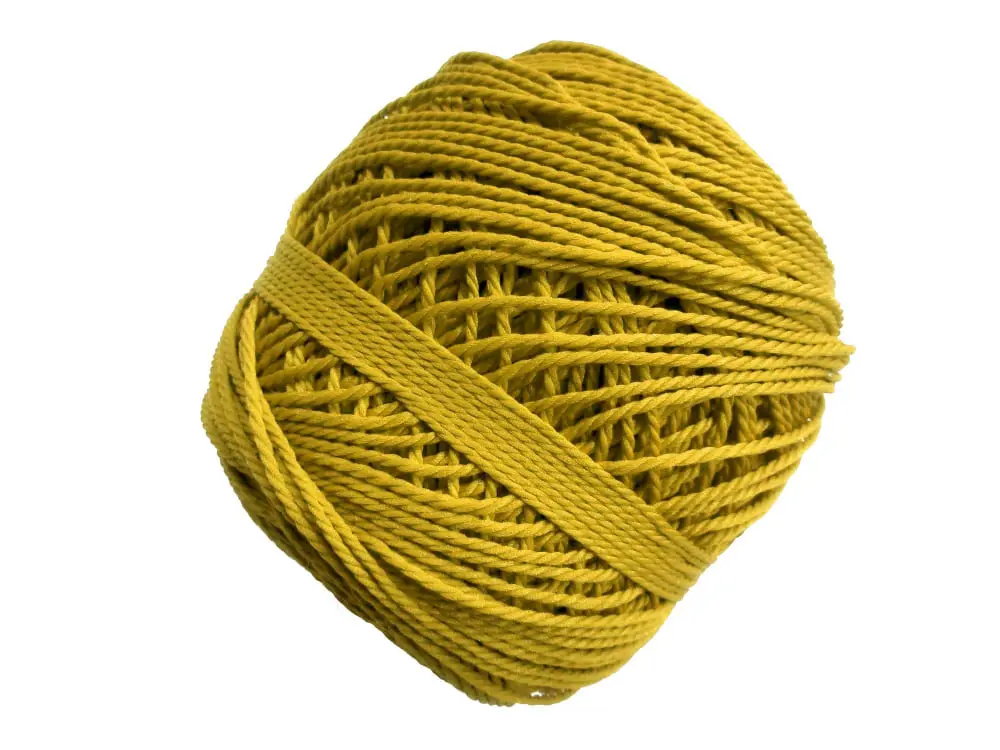
The fiber content of yarn is specified as a percentage on the label and tells you what the yarn is made from. This is important as it determines how the yarn behaves, how it feels, and how it should be cared for.
- Wool: Known for its warmth and elasticity, wool is a traditional choice for knitting and crocheting. It requires special care in washing to avoid shrinkage.
- Cotton: Light and breathable, cotton yarn is an excellent choice for warmer weather projects. It’s typically machine washable, but may shrink in the dryer.
- Acrylic: An affordable, synthetic option, acrylic yarn is easy to care for, machine washable and resistant to moths.
- Silk: This luxurious, natural fiber has a beautiful drape and shine, but requires gentle, hand washing.
- Blends: Combinations like cotton-acrylic or wool-alpaca merge the benefits of different fibers. These blends can offer a balance of affordability, durability, and care convenience.
The fiber content can also inform you on how the finished project will appear. For instance, silk and bamboo fibers have a sheen and drape well, making them suitable for elegant shawls or tops. Wool, particularly merino, makes cozy blankets and winter garments.
Remember to note the recommended care instructions associated with the specific fiber content when choosing the right yarn for your project.
Color Name and Dye Lot On Yarn Label
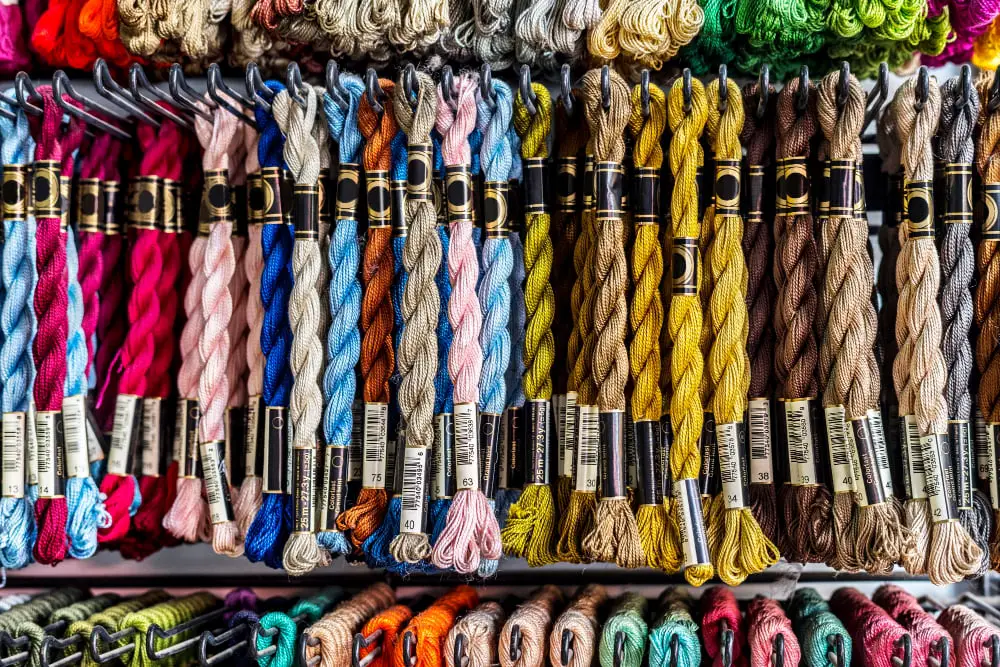
When selecting yarn to complete a project, it is essential to understand that color consistency varies across different dye lots. The term “dye lot” refers to a batch of yarn that was dyed together, resulting in a unique color code. This color code, along with the dye lot number, is usually indicated on the yarn label.
1. Always check the dye lot number: Make sure that all the yarns purchased for a single project share the same dye lot number. This action ensures there are no noticeable differences in color from one skein to another.
2. Select a sufficient amount: To avoid running out mid-project, buying sufficient yarn of the same dye lot is advised. Running out might result in using yarn from a different lot, causing a visible color difference in the project.
3. Color name: Each yarn color should have a unique name printed on the label. It aids in differentiating hues and shades, especially when similar colors are available.
4. Make note for future purchase: If a particular color is liked and can be used in future projects, noting down the color name and dye lot number is beneficial. This allows easer replication of the color in future works.
In summary, paying close attention to color name and dye lot is crucial in crafting a consistent and visually pleasing piece, so always use it as an important reference point.
Care Instructions On Yarn Labels
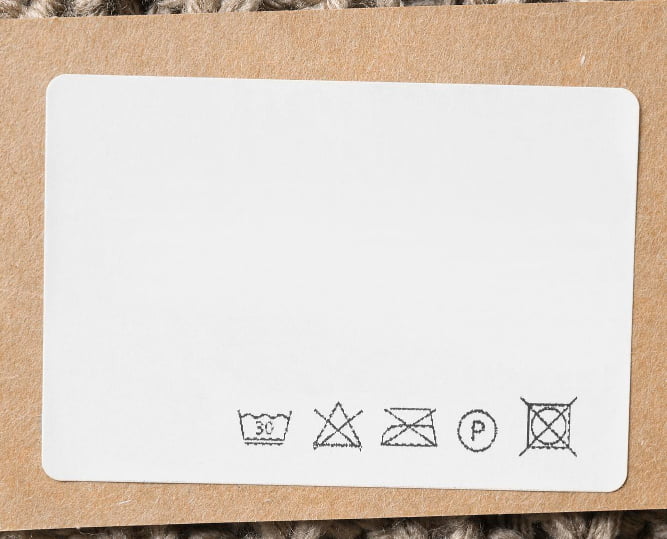
Different yarns require different care methods – and this is precisely what the care instructions specify on a yarn label. These symbols can guide whether your yarn is machine washable or needs a gentle hand wash.
The basin symbol signifies washing. If the basin symbol displays a hand, it means hand wash only. A number within the basin signifies the maximum temperature to wash the yarn.
The triangle represents bleaching. A clear triangle means any bleach is allowed, while a crossed-out triangle means do not bleach.
The square with a circle stands for tumble drying. Again, a number within the symbol indicates a heat setting. Crossed out symbol implies do not tumble dry.
The iron symbol, unsurprisingly, denotes ironing. The dots in the iron representation, if any, suggest a suitable heat level. Crossed out means no ironing.
Finally, the symbol of a circle in a square indicates dry cleaning. A letter within guides the type of solvent to use or if not to dry clean.
Understanding these symbols ensures longevity of your yarn-made goods, as they will receive appropriate care.
Understanding Numbers On a Yarn Label
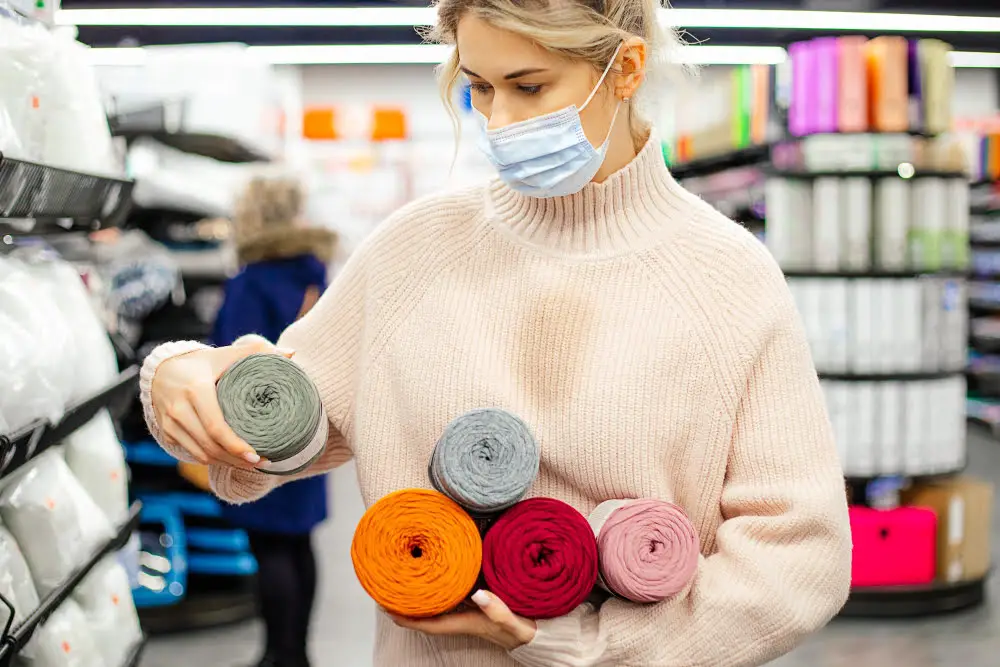
Yarn labels typically feature two key numbers: one for the yarn’s weight and one for its length.
The weight number relates to the thickness of the yarn strand. In general, the higher the number, the thicker the yarn. This system ranges from 0 (lace weight, the thinnest) to 7 (jumbo weight, the thickest). These numbers are standards set by the Craft Yarn Council, helping you to select the correct yarn for your project.
The length number denotes the total length of yarn in a single skein or ball. This is usually measured in yards, but occasionally in meters. Keep in mind that length and weight are related: a heavier yarn will have less yardage, while a lighter yarn will have more.
Understanding these numbers is invaluable for planning your projects accurately and avoiding running out of yarn mid-way. You can use them to compare different brands and types of yarn, as well as to calculate the amount of yarn you’ll need for a specific pattern.
Remember also that the number indicating the recommended needle or hook size is not a rule, but a guideline. You can deviate from it to achieve different kinds of fabric textures.
Examples of Reading Yarn Labels
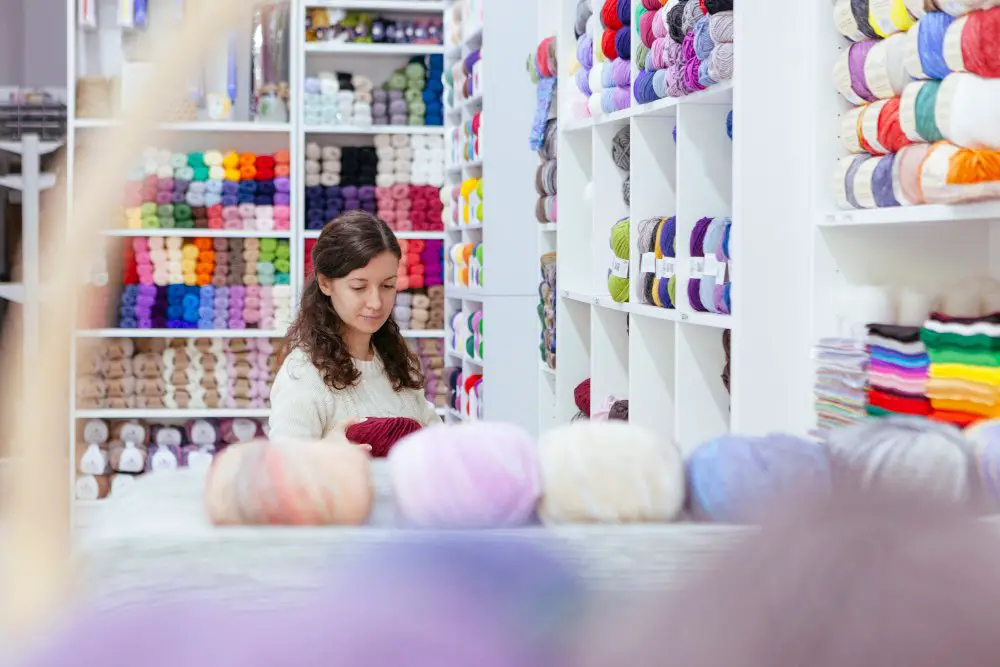
When interpreting the information on a yarn label, it’s crucial to understand the symbols and terminology used, let’s go through some examples:
- Brand “EverSoft”: A hypothetical line of yarns known for their incredibly soft feel. The brand name can give insights into the quality or unique features of the yarn.
- Yarn name “Rainbow Mix”: Likely indicates the color variety in a single skein, perhaps dyed in various colors mimicking a rainbow.
- Category “4 Medium”: Referring to the thickness of the yarn strand. It’s suitable for many types of projects like sweaters, blankets, or scarves.
- Weight “3.5 oz/100 g”: This is the actual weight of the yarn in the skein.
- Yardage “170 yds/155 m”: Gives the length of yarn you’re holding in your hand.
- Gauge “18 sts and 24 rows = 4 inches”: A valuable guide for knitting or crocheting to the desired project size.
- Fiber “100% Cotton”: Cotton is known for being soft, sturdy, and machine washable, suitable for baby clothing or dishcloths.
- Color “Livewire” / Dye Lot “35467”: Handy when needing multiple skeins of the same color because dye lots ensure matching shades.
- Care symbols: Instructions such as washing temperature, bleaching allowance, ironing and drying guidelines—essential for maintaining the longevity of your yarn-made items.
Remember, understanding these elements can profoundly impact the outcome of your projects, helping achieve the desired product fit, feel, and durability.
Yarn Label Storage Suggestions
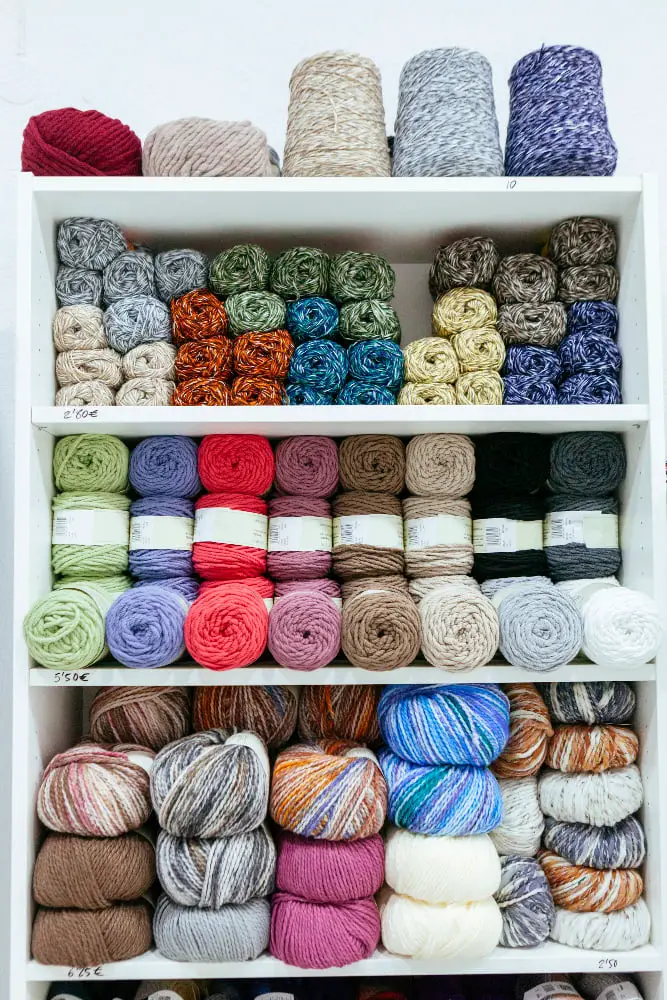
Storing yarn with its label is extremely advantageous. This practice helps in maintaining the details related to the yarn that might be required in the future.
Here’s how you can securely store your yarn labels:
Utilise a Binder: Keeping yarn labels in a binder with plastic sleeves can be an organized way to store these important little bits of information.
Polymer Clay Tags: Flatten a small piece of polymer clay, indent it with the essential data from the yarn label, and bake. Attach this to your yarn ball or leftover yarn.
Scrap Yarn: Tie a small piece of scrap yarn from the labeled ball to the label itself before storing as an easy way to match the yarn with the label later on.
Digital photos: Taking photos of your yarn labels and storing them on your computer or phone can be another effective method of keeping this information safe and easily accessible. Include the yarn next to the label for easy identification.
Always remember, the secret to effective crafting is maintaining clear information about the materials in use, and storing yarn labels ensures just that.
Best Yarn Weight for Beginners
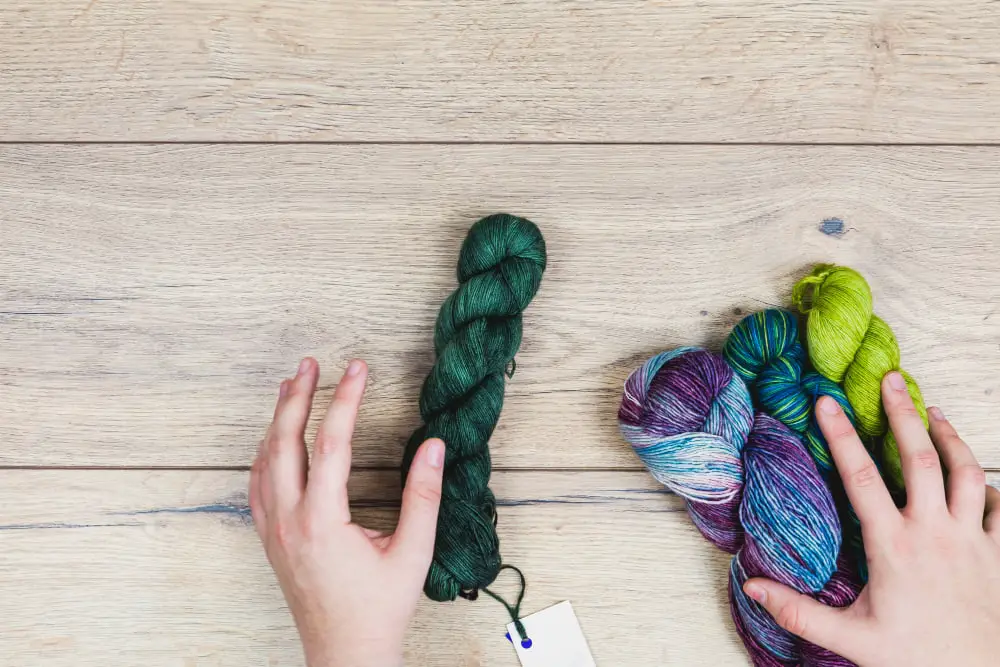
Approaching the world of yarn crafts, selecting a starting point in terms of yarn weight can be a little overwhelming. Consider beginner-friendly options such as medium-weight, worsted yarns. They are easier to handle and show stitches clearly, perfect for those new to the yarn art form.
Worsted weight, sometimes classified as ‘4’ on yarn labels, is ideal due to its balance between thickness and flexibility. Lightweight enough not to be unwieldy but sufficiently heavy to create well-defined stitches, it’s perfect for new crafters to practice and perfect their skills.
Chunky or bulky weight yarn, labeled ‘5’ or ‘6’, is another good choice for beginners, especially for projects that you want to finish quickly. Its larger size helps to speed up projects, although it can be a bit harder to manipulate than worsted weight yarn.
Avoid lace and fingering weights (‘0’-‘3’ on labels) when you’re first starting out. Although beautiful, these thin yarns can be challenging even for experienced crafters, as the stitches are much smaller and can be difficult to see.
Lastly, it’s best to stick to solid colors over variegated yarns in the beginning. While ombré and multi-colored yarns are visually striking, they can make it harder to see your stitches. Keeping things simple with a solid color allows beginners to focus on mastering the basic skills without unnecessary distractions.
Yarn Label Queries and Answers

Sometimes, even with all the information presented, there may be remaining queries about yarn labels. To address these, let’s dive into some common questions:
- What if my label doesn’t list a weight category? Look at the recommended gauge and needle size. They can often give a general idea about the yarn’s thickness.
- My label only lists yardage, not physical weight. How can I convert this? By searching for yarn weight conversion charts online which can give equivalent weights in grams or ounces for different lengths of yarn.
- Can I substitute one yarn type for another? It’s possible, but ensure to check gauge and fiber content. Consider the project type and necessary durability too.
- What if I lose my yarn label? Try to secure labels with a piece of the yarn to a card. If lost, websites of yarn manufacturers usually have detailed information, or simply wrap a piece around your phone, take a photo and store in a designated folder.
By closely reading and understanding yarn labels, you become well-equipped to select the perfect yarn for any project. Also, remember to store labels safely for future reference. Many have found success with ideas such as keeping a yarn diary, creating a digital photo catalog or using storage boxes. As a result, they can review yarn details even after using it, which benefits when planning future projects or reusing favorite yarns.
The Purpose of Yarn Labels

Yarn labels serve as a roadmap for crafting enthusiasts, assisting them in making right wooly choices. By giving vital information such as yarn’s fiber content, weight, yardage, and dye lot, labels ensure the most suitable yarn is picked for the specific craft project.
Knowing the fiber content is essential as it influences the usability, comfort, and washability of the finished product.
Labels inform about the yarn’s weight, helping understand how thick or thin the yarn is. This is especially important for gauge, ensuring your final project is of the right size.
Yardage tells how long the yarn is, important for ensuring you have enough to complete your project.
Gauge information helps determine how many stitches and rows are required to make a certain size square, assuring your end result is not too loose or tight.
Reading the Dye Lot number ensures color consistency throughout your project, as there can be subtle variations in color in different dye batches.
Care instructions put forth how to wash, dry, and generally care for your finished product, prolonging its life and maintaining its quality.
Finally, understanding numbers on a yarn label is essential, as they can represent everything from the yarn’s thickness to the number of plies.
FAQ
What do the numbers on yarn labels mean?
The numbers on yarn labels, ranging from 0 to 6, signify the thickness of the yarn with ‘4’ indicating a medium weight yarn, in a system standardized by the Craft Yarn Council.
What does 7 oz yarn mean?
7 oz yarn refers to a skein of yarn that weighs 7 ounces or around 198 grams, the quantity is based on weight not on yardage, and each skein may vary slightly in exact length.
How do you read a yarn chart?
In flat knitting, yarn charts are deciphered by starting from the bottom and reading from Right to Left on right side rows (typically odd-numbered) and from Left to Right on the wrong side rows (generally even-numbered).
What is the significance of dye lot numbers on yarn labels?
Dye lot numbers on yarn labels are crucial as they assure color consistency, since yarns dyed in the same lot have identical color shades, vital for seamless look in yarn projects.
How does the ply number on a yarn label affect your knitting or crocheting project?
The ply number on a yarn label indicates the thickness of the yarn, influencing the texture and size of the finished knitting or crocheting project; more plies result in thicker yarn and thus a denser, warmer finished product, while fewer plies create a thinner, more delicate result.
How do you interpret the laundry care symbols on a yarn label?
Interpreting laundry care symbols on a yarn label involves understanding diverse signs; for instance, a tub with wavy water means machine wash, a dot inside the tub implies temperature limitations, a crossed-out tub indicates do not wash, a triangle represents bleaching is allowed, and an iron symbol with dots demonstrates ironing temperature guidance.
Related Stories
- How Much Yarn to Crochet a Scarf: Quick & Easy Guide
- How to Calculate Yarn Yardage: Simple Steps for Accurate Measurement
- How Many Yards of Yarn for a Scarf: Comprehensive Guide to Scarf Knitting
- How Much Yarn for Scarf: Comprehensive Guide and Tips
- How Much Yarn to Knit a Scarf: Comprehensive Guide for Knitters
